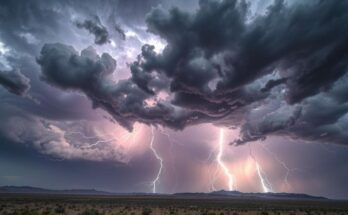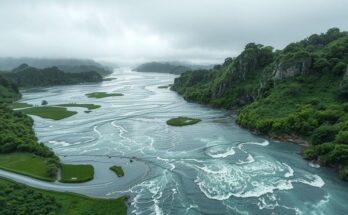This article highlights critical facts regarding South Africa’s water crisis, revealing that 50% of potable water is lost due to inefficiencies, over 3 million people lack basic water supply, and there are striking health implications. The agricultural sector is the major water user, and compliance issues persist among Water Services Authorities, underscoring the need for immediate attention to resolve these issues.
Water is an essential resource, referred to as “life” by the South African Department of Water and Sanitation. As World Water Day approaches, it is crucial to comprehend the ongoing water crisis in South Africa amidst broader global concerns.
In South Africa, 50% of the potable water is classified as Non-Revenue, which indicates significant losses attributable to inefficiencies and leaks within the distribution system. Furthermore, over 3 million South Africans lack access to a fundamental water supply, revealing the stark water inequalities that persist.
Data indicates that 52% of individuals living in informal settlements within Johannesburg have resorted to constructing their own pit latrines due to inadequate sanitation facilities. Globally, the United Nations Development Programme reports that 443 million school days are forfeited annually due to illnesses stemming from poor water access.
Tragically, the South African Human Rights Commission highlights that 115 people die every hour across Africa from diseases linked to poor sanitation and unsafe water. Compounding the crisis, South Africa experiences rainfall levels that are 40% below the global average.
While the global average water usage stands at 173 liters per person per day, South Africans consume an average of 237 liters, a concerning statistic for a country known for its water scarcity. The agricultural sector claims 61% of South Africa’s water usage, with households and industries using 27% and 7%, respectively, according to the CSIR.
The recent Blue Drop Report revealed that out of 144 Water Services Authorities (WSAs), 24 have not made any effort towards compliance, and 40 are in critical conditions. The Water Services Act stipulates a minimum water supply standard of 25 liters per person per day, but during the water restrictions experienced during Cape Town’s ‘Day Zero,’ the average supply was 50 liters per person per day.
In conclusion, South Africa’s water crisis remains a pressing issue characterized by inefficiencies in the water system, unequal access to potable water, and alarming health implications. The country’s overconsumption of water, particularly in agriculture, and insufficient adherence to compliance regulations exacerbate this situation. With a significant portion of the population lacking basic water access, urgent action is required to address these challenges and ensure equitable water distribution.
Original Source: infrastructurenews.co.za




